You have no items in your shopping cart.
SELECT RIGHT LENS AND COATING
Everything About Lens Is Here
Use the menu below to jump to a specific section.
| * HD Digital Freeform Lens | * Lens Type | * Lens Index. |
| * Lens Coating |
* Photochromic / Transition |
* Polarized Lens |
What is the High Definition Digital Freeform Lens?
The digital free form progreissive lenses are produced by a digital CNC (Computer Numerically Controlled) generator that can creates in three directions; up and down, side-to-side and in-and-out, with 0.006D pin-point accuracy. The traditional progressive lens accracy is only 0.12D or 0.10D.
All bifocal and progressive lenses provided by OLOeyeglasses.com are high definition digital freeform lenses.
Lens Type:
Dependig on the use of your eyeglasses, there are different types of lenses are available. You should discuss with your eye doctor or optician to dtermine which type of lens you need. Following information can help you make a right decision.
|
(Bifocal FT28 Lens) |
(Blended Bifocal Lens) |
(Progressive Lens) |
Single Vision:
It has only one viewing area throught the entire lens. It is made to correct either nearsightedness (myopia), intermediate distance or farsightness (hypermetropia). They are the standard eyeglasses prescription for driving (far distance), working on the computer (intermediate distance) or reading papers, document, etc.
Bifocal Lens:
Bifocal lens has two viewing zones in one lens. Each lens has two points of focus. The lower part of the lens is for near vision(reading) and the upper part is for far distance(driving).
|
Bifocal FT28: |
FT-28 is a bifocal lens with a visible D-shape rim on the bottom of the lens. The D-shape area is to correct nearsightedness. The rest part of the lens is to correct farsightedness. |
|
Blended Bifocal: |
Blended bifocal lens is also called no-line bifocal lens. It is a bifocal lens without visible lines. It offers a more youthful appearance than lined bifocals. Blended bifocal should not be confused with progressive lenses. |
Progressive Lens:
Progeressive lenses, also called Progressive Addition Lenses (PAL) or multifocal lenses, provide multiple strength in one lens that changes gradually from distance through internediate to near
With our German made OptoTech CNC generator, we provide series of High Definition digital freeform progressive lenses to satisfy your different requirements.
| HD Freeform ED + | HD Freeform Computer Lens | HD Freeform Outdoor |
| It's a full function general-purpose high definittion digital freeform progressive lens optimized for all viewing distances. | It is a true progressive computer lens designed for working at a computer and intensive indoor activities. | It delivers the most enlarged distance visual field for active outdoor pursuits. |
|
* Wide fields of vision in all three zoones, distance, intermediate and near. * Fast adaption for the first time wearers. |
* Wider intermediate viewing zone and easier access to the reading area. * Excellent for computer and indoor activities. (not for driving purpose) |
* 180⁰ distance zone, wider than any competitive short-corridor progressive lenses. * Best for outdoor activities.. |
|
(Conventional Progressive / HD Freeform ED Plus ) |
(HD Freform Computer Lens / General Purpose Lens) |
(Wider Distance Zone) |
Lens Index:
Lens materials are differentiated by their refractive index. Lenses correct refractive errors by refracting(bending) light as it passes through the lens. The light bending ability of lenses is determined by the index of refraction of the lens material. Lenses with higher index bend light more effieiently and need less material than lower index lenses. In short. the higher the index, the thinner and lighter the lens.
| INDEX |
DESCRIPTION |
| Index 1.50(CR39): |
CR 39 is the most widely-used lens material. It is more solvent-resistent than polycarbonate.Recommended Range: up to +/- 2.00 |
|
Mid-Index 1.56: |
Mid index 1.56 is thinner and lighter than CR39. (not for rimless frames). * Recommended Range: up to +/- 4.00 * Thickness: 25% thinner than 1.50(CR39) |
|
1.59 (PC): |
1.59 PC(Polycarbonate) is lightweight, durable and impact resistant lens. It is 22% thinner than CR39 standard lens. It is the best choice for children's glasses, outdoor activities and for making rimless frames. * Recommended Range: up to +4.00 & -6.00 * Thickness: 30% thinner than CR39. |
|
Hi-Index 1.61: |
It is high impact resistent and good for rimless frames. It is recommended for higher prescriptions, and good for children and outdoor activities. * Recommended Range:: +/-5.00 and up. * Thickness: 35% thinner than CR39. |
| Super Index 1.67: |
It is high impact resistent and good for rimless frames. * Recommended Range: +/- 6.00 and up * Thickness: 45% thinner than CR39. |
| Ultra Index 1.74: |
It is high impact resistent and good for rimless frames. It is the highest index lens and 13% thinner and lighter than the super index 1.67 lens. * Recommended Range:: +/- 7.00 and up * Thickness: 50% thinner than CR39 |
Lens Coating:
| Anti-Scratch: |
It is a built-in scratch resistant coating to make lenses more durable. It is a default coating of our lenses. |
| UV400 Protection: |
It is an invisible coating that blocks ultraviolet (UV) light from damaging our eyes. |
| AR Coating: |
Anti-Reflective Coating (also called AR Coating) is a special multilayer coating that reduces the glare and improves visual clarity. It provides better vision for night driving and more comfortable vision for reading and prolonged computer use. |
| Blue Cut Coating: |
Outlook blue light defense lenses are designed to provide your eyes with the ultimate protection. In addition to its UV protection, it employs a unique coating that reflects the unwanted blue light which cause eye strains and thus enhancing visual comfort and color contrast. Blue Cut Coating includes Blue Defense Coating, Premium AR Coating, Hydrophobic Coating, Oleophobic Cpating and UV400 full protection. |
Photochromic/Transition Lens
| Photochromic/Transition lenses are clear indoors and darken automatically when expose to sunlight. It is activated by the UV radiation. If the windshield and window glasses of cars block UV rays, photochromic lenses won't get as dark as tinted sunglasses. |
Polarized Lens:
| Polarized lenses contain a special filter that blocks horizontally reflected light. Polarized lenses can improve visibility and reduce glare. But, they reduce the visibility of images produced by LEDs or LCDs, you may be unable to see your GPS or cell phone. |

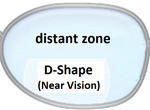
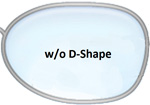
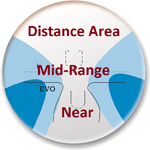
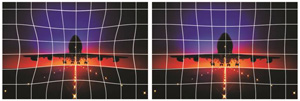
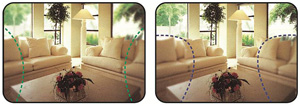
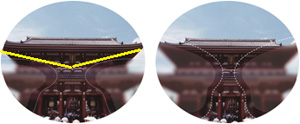


